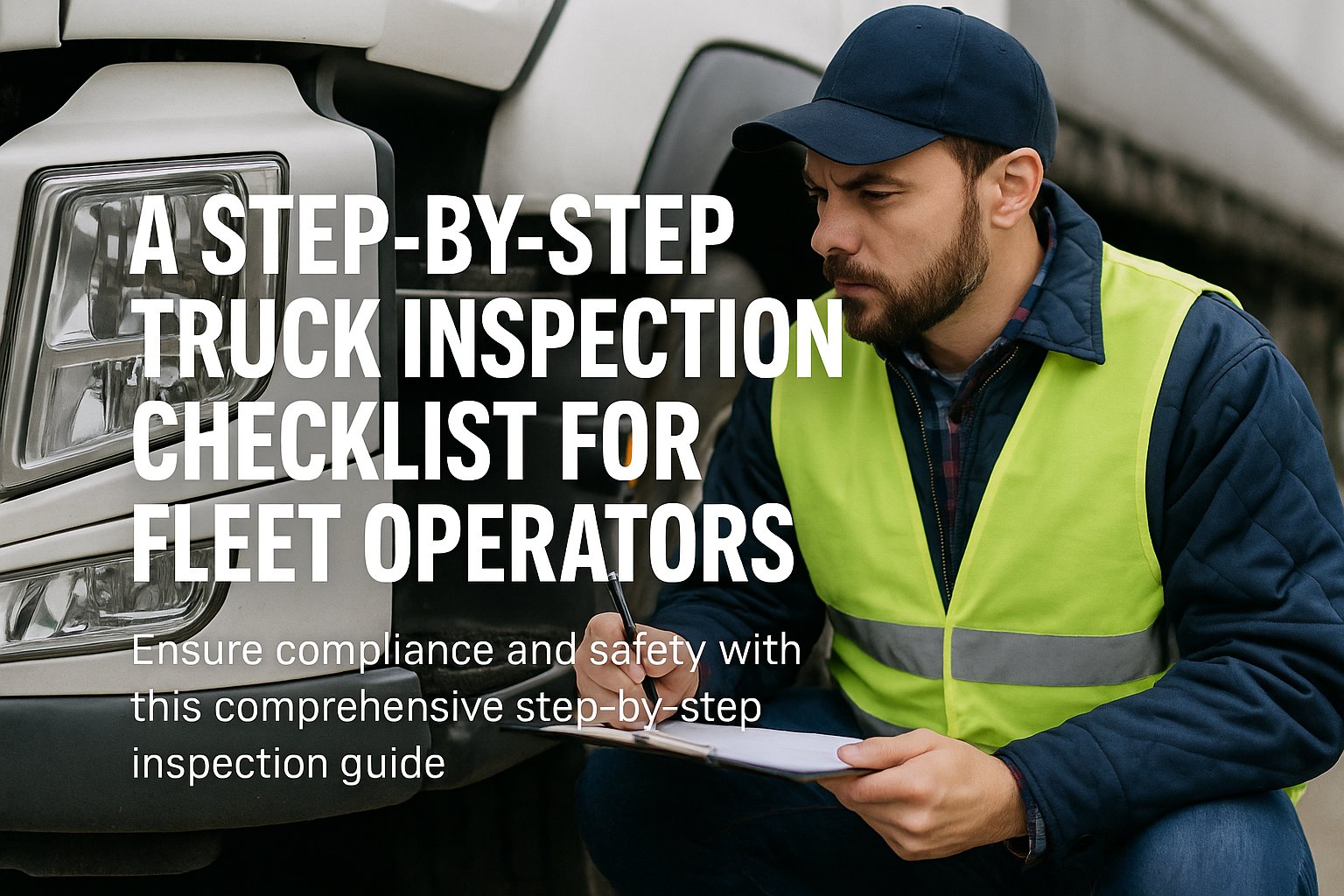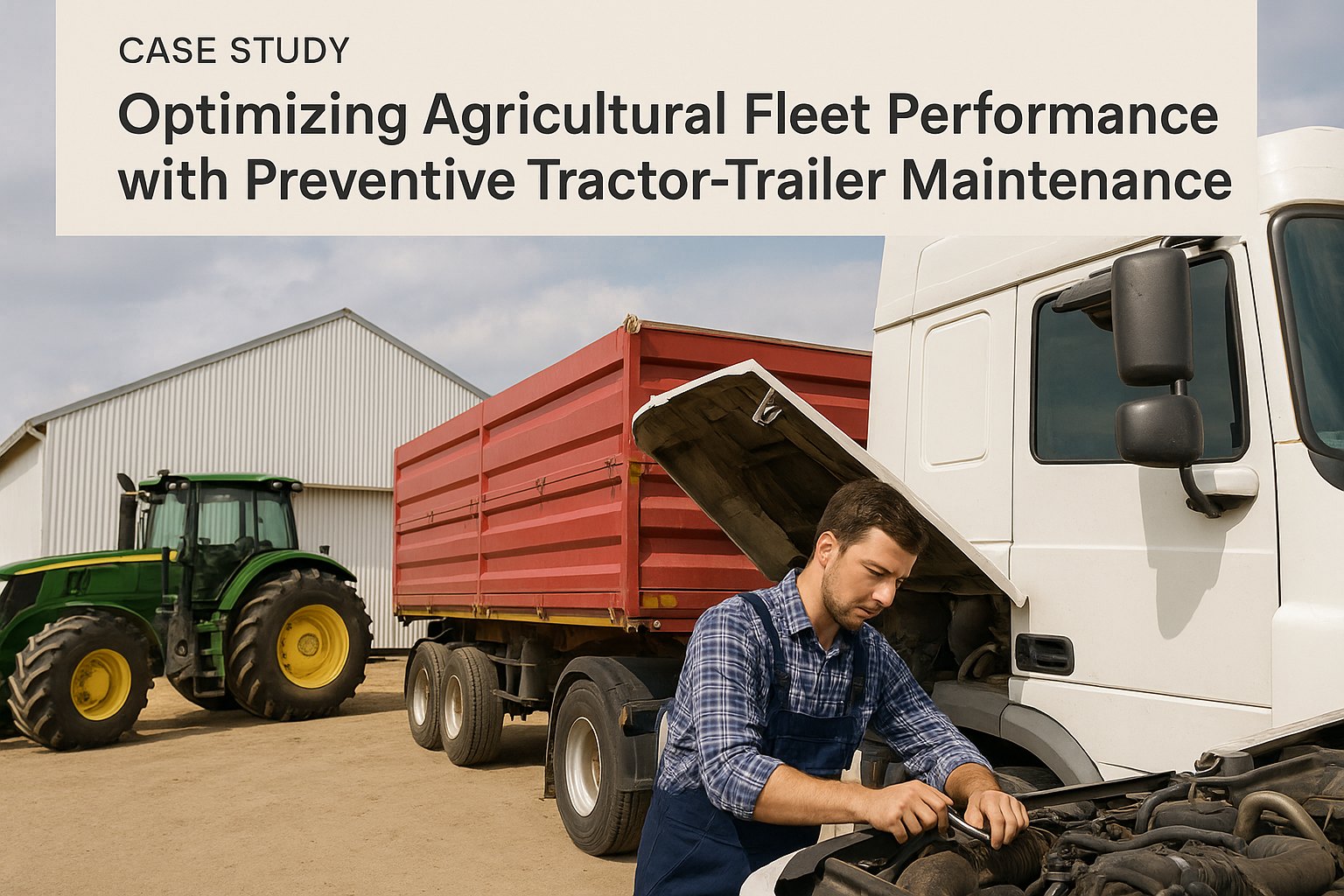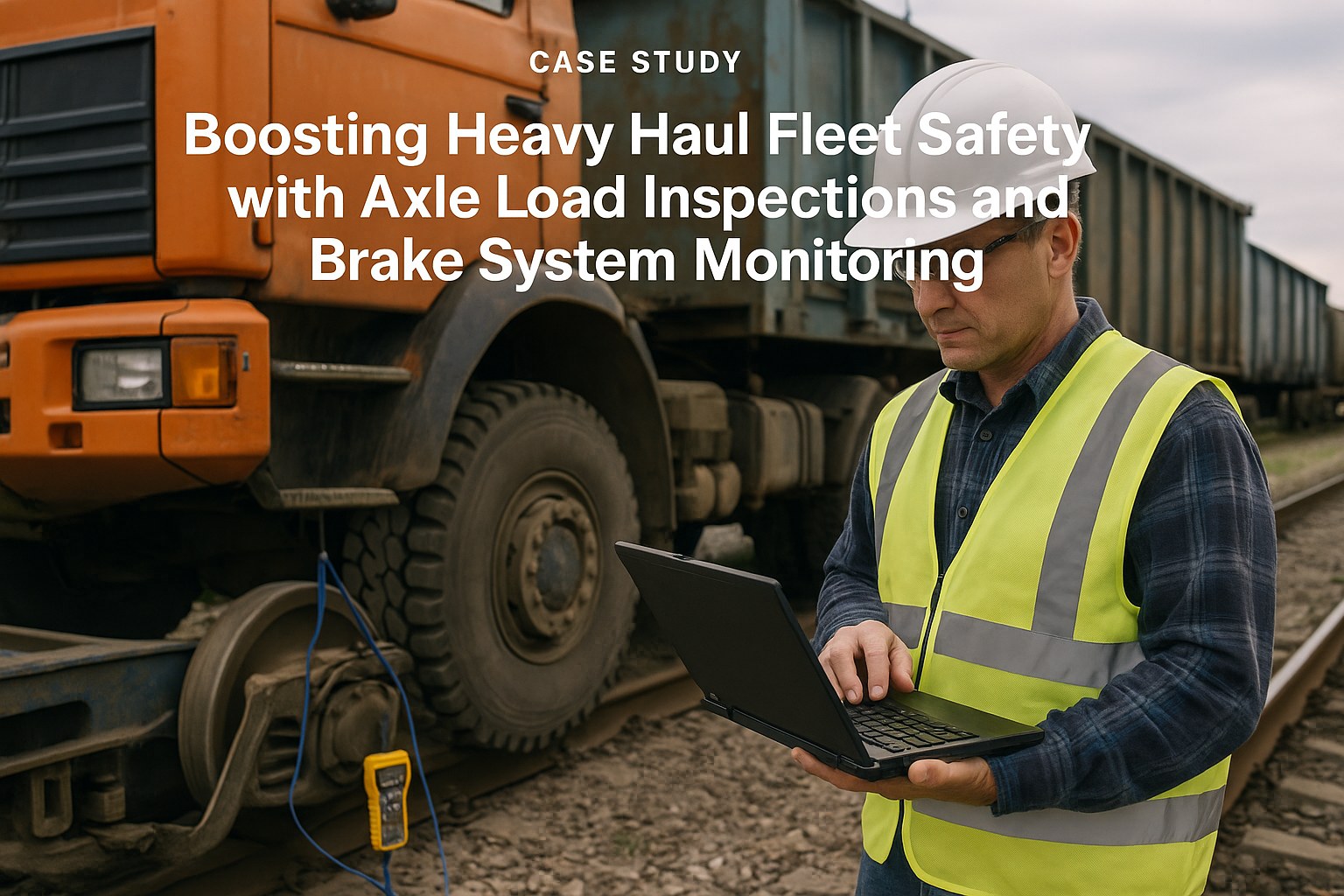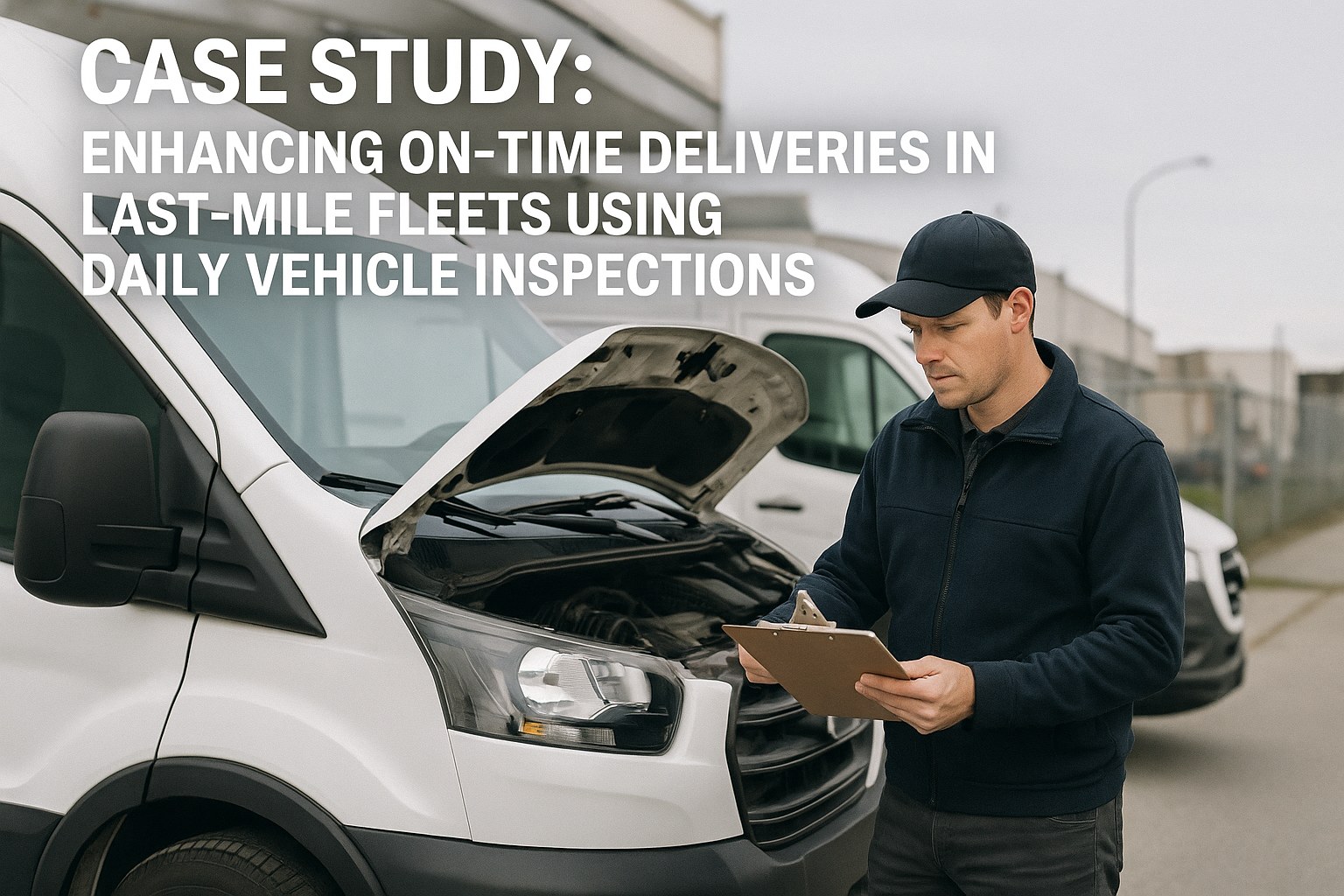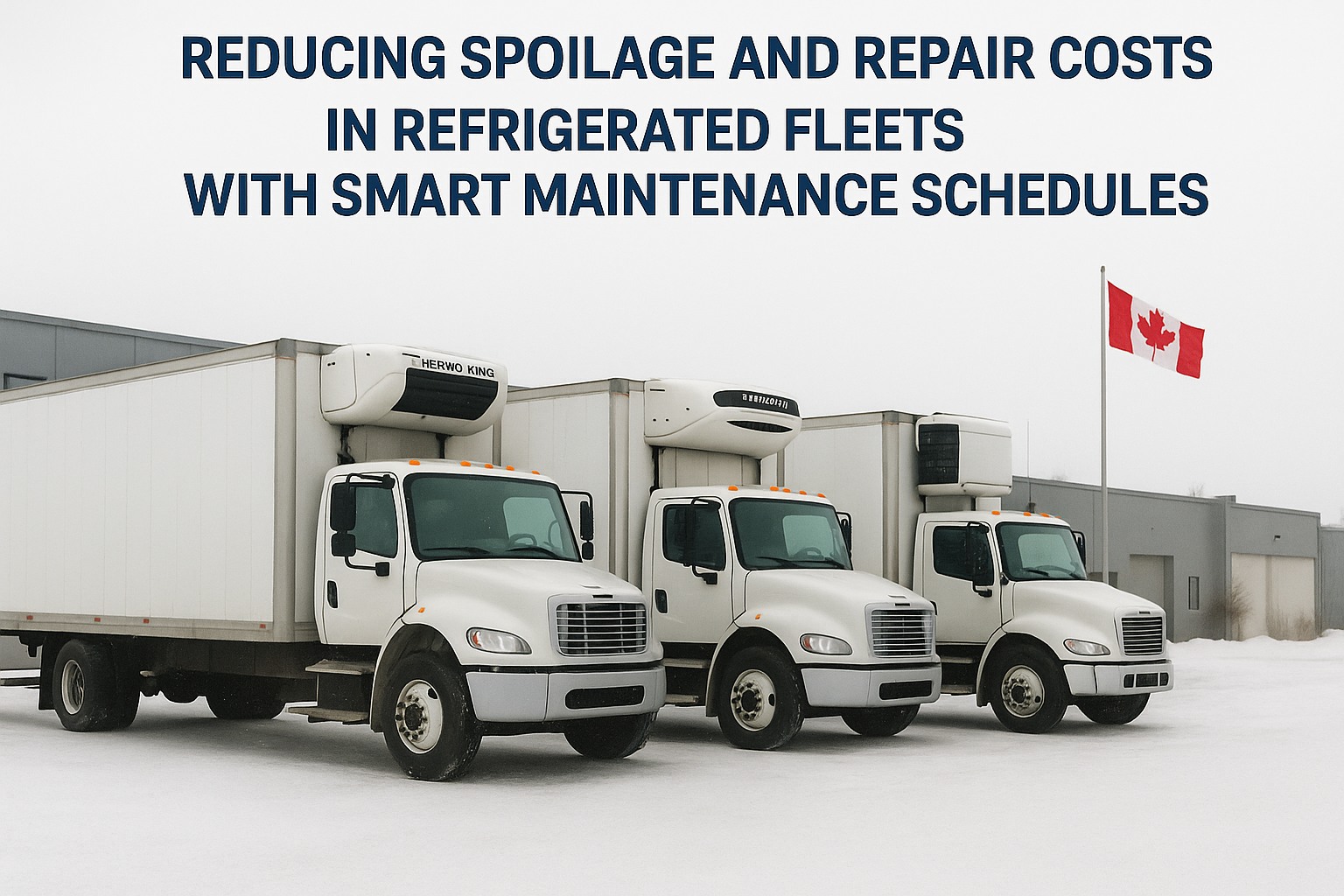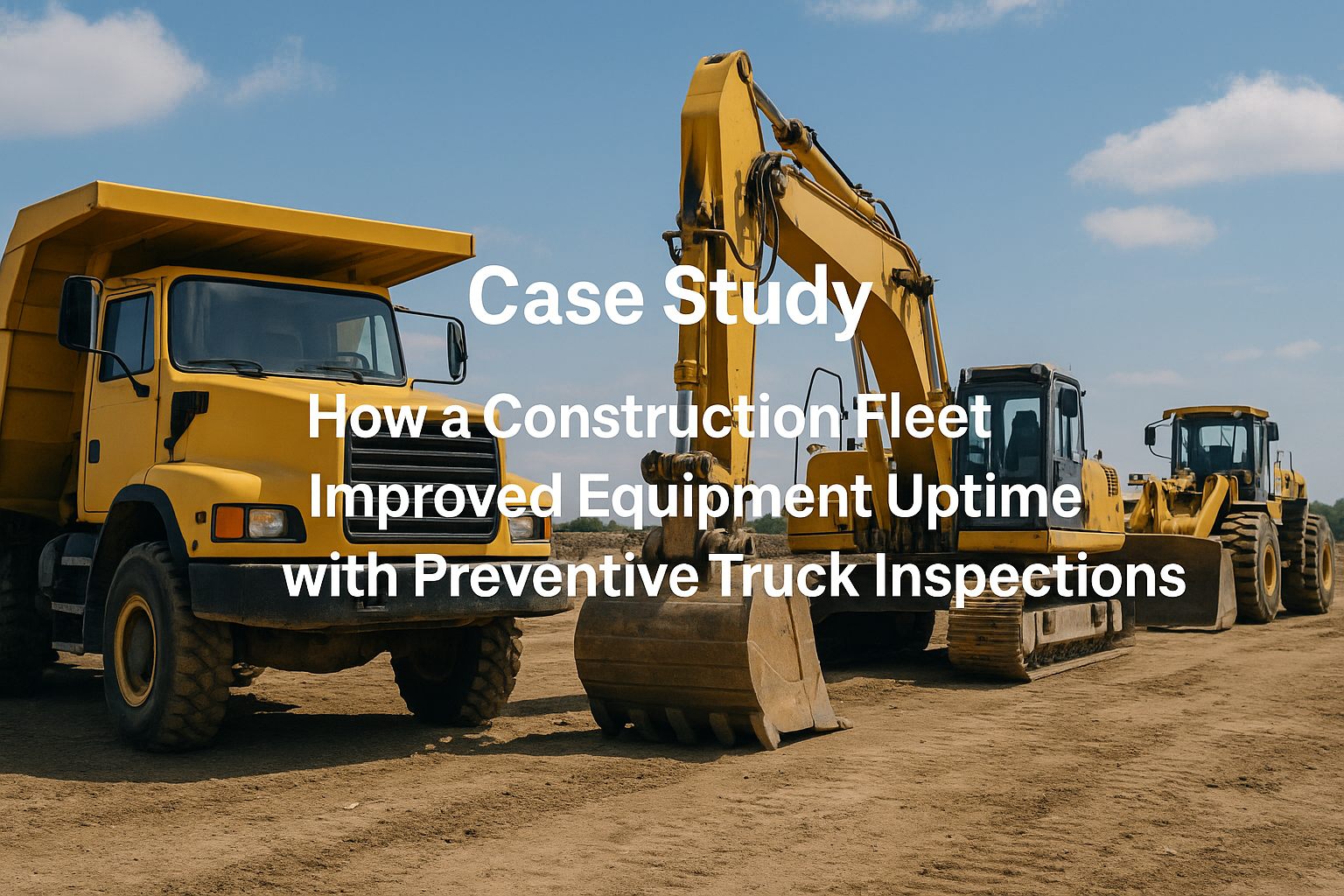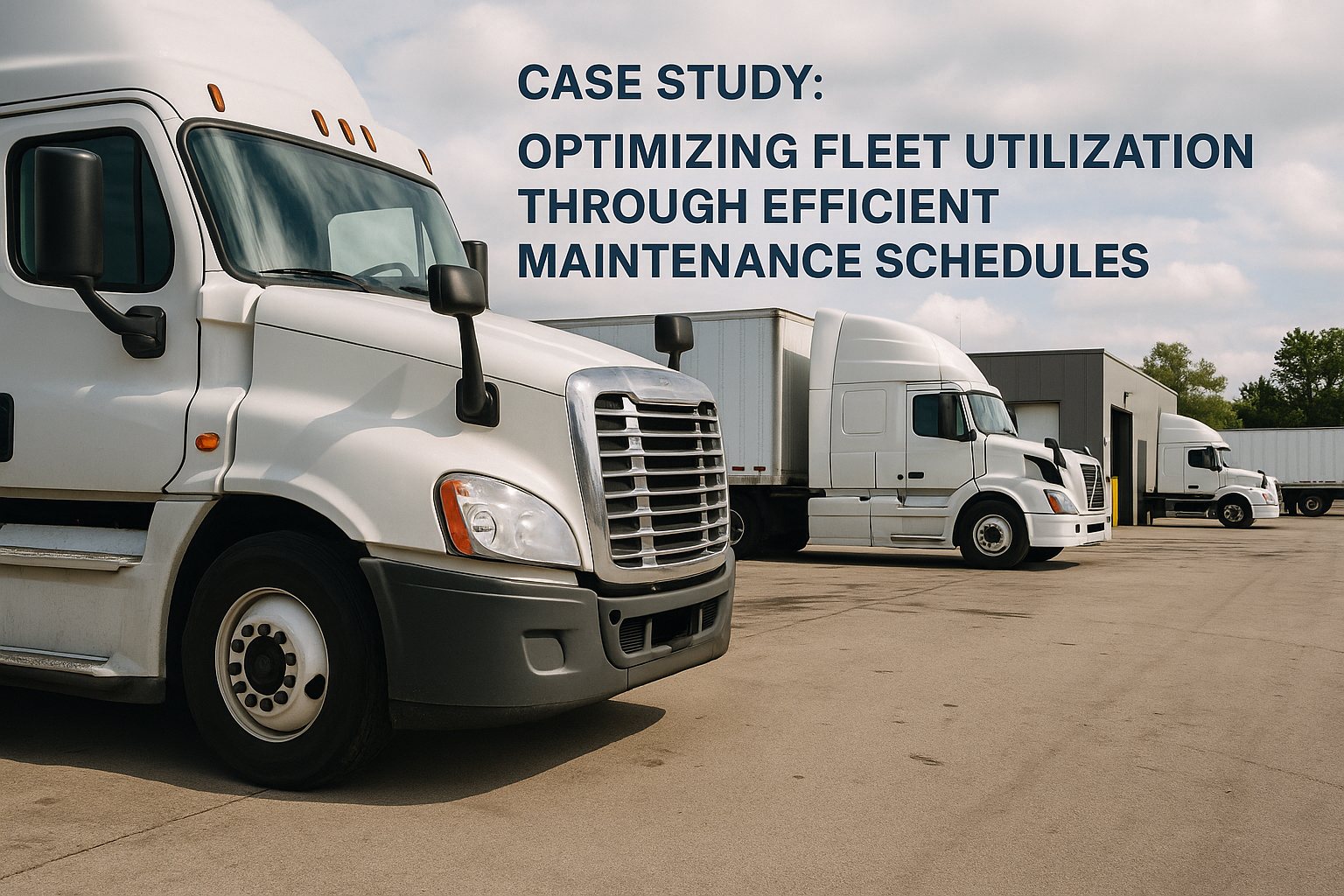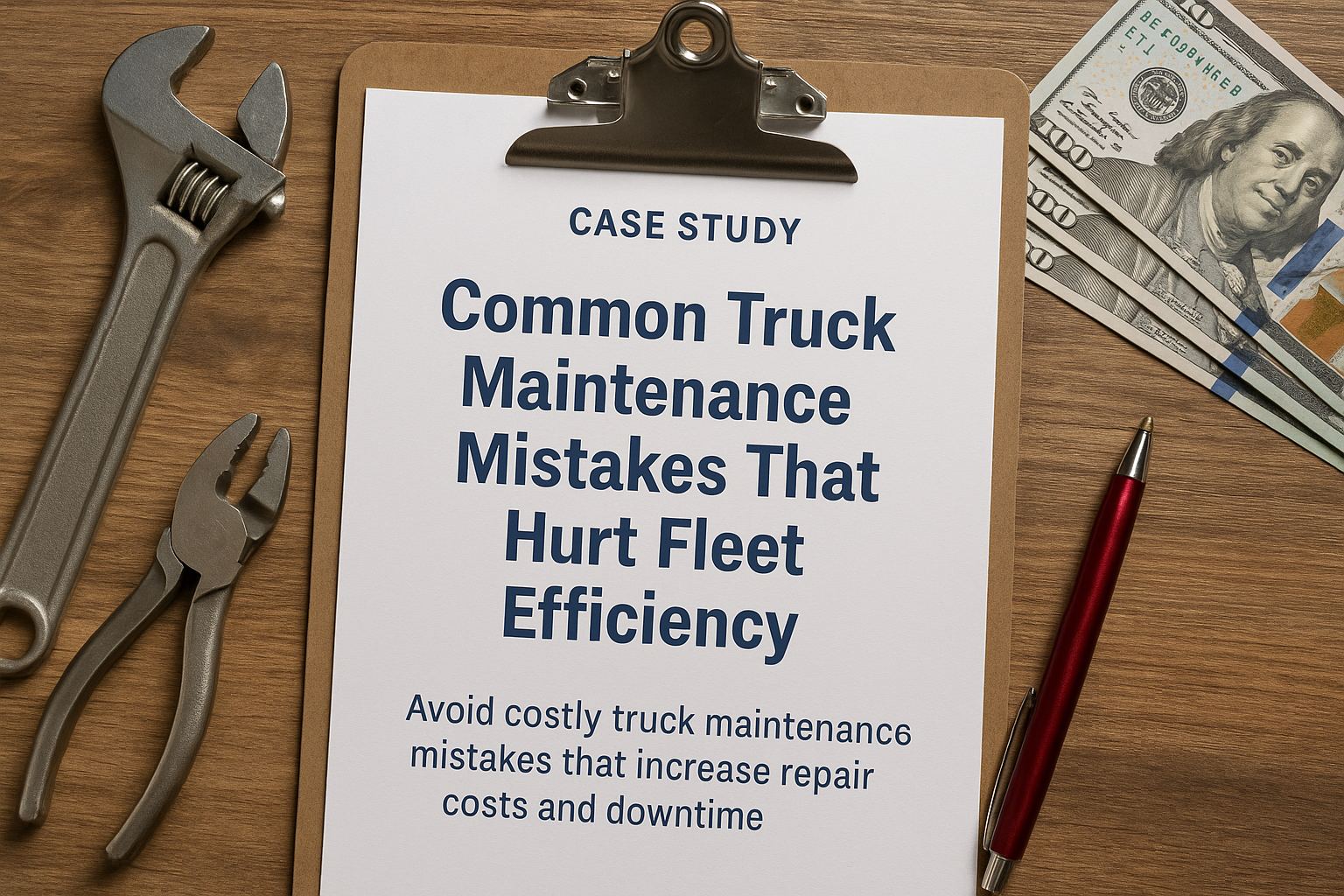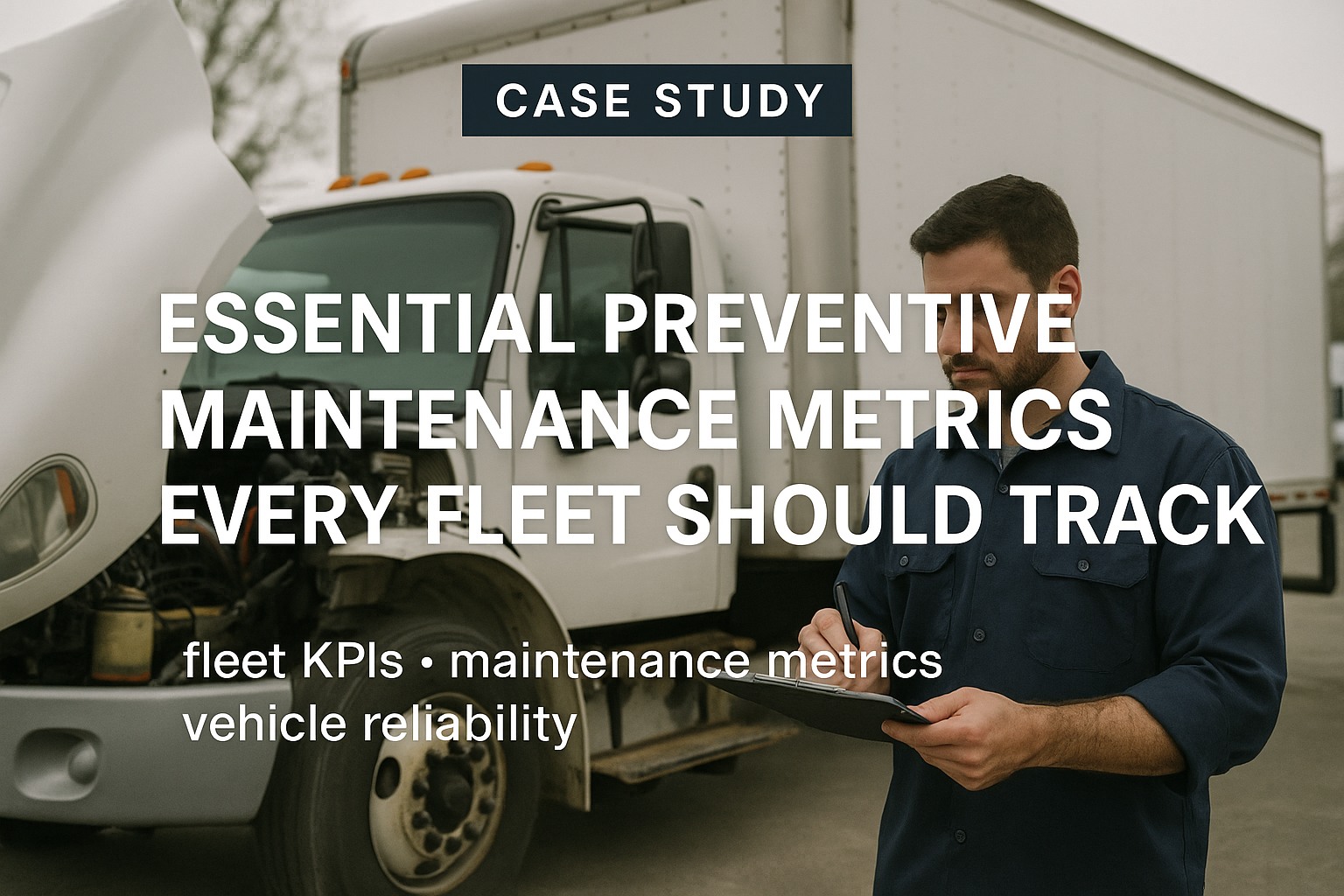In 2024, the Commercial Vehicle Safety Alliance (CVSA) reported that 21.6% of commercial vehicles were placed out of service during roadside inspections and with brake violations accounting for 26.9% of all vehicle out-of-service violations. For US fleet operators managing thousands of daily trips, a comprehensive truck inspection checklist isn't just a regulatory requirement—it's the foundation of operational excellence and safety. This definitive guide provides fleet operators with a proven step-by-step inspection framework that has helped leading companies achieve 94% first-time inspection pass rates while reducing maintenance costs by 42%.
The cost of inadequate truck inspections extends far beyond DOT fines. A single out-of-service violation results in average losses of $8,500 per day in delayed deliveries, emergency repairs, and driver downtime. Yet companies implementing systematic inspection protocols report remarkable improvements: 87% fewer roadside violations, 65% reduction in unexpected breakdowns, and insurance premium savings exceeding $125,000 annually per 100 vehicles. This comprehensive checklist transforms compliance from a burden into a competitive advantage.
Consider the parallel between fleet inspections and critical infrastructure maintenance: both require meticulous attention to detail, standardized procedures, and proactive identification of potential failures. Just as hospitals maintain life-saving equipment through rigorous protocols, fleet operators must inspect their vehicles with equal precision. The stakes are remarkably similar—both industries cannot afford failures that risk lives and disrupt essential services.
Understanding DOT Inspection Requirements
Federal Motor Carrier Safety Regulations (FMCSR) mandate specific inspection requirements that form the backbone of any effective truck inspection checklist. Fleet operators must navigate a complex framework of pre-trip, post-trip, and periodic inspections, each serving distinct safety and compliance purposes.
Critical DOT Inspection Requirements:
- Pre-Trip Inspections (§396.13): Required before each dispatch, documented in driver logs
- Post-Trip Inspections (§396.11): Written reports for any defects or deficiencies discovered
- Annual Inspections (§396.17): Comprehensive 12-month inspection by qualified inspector
- 90-Day Inspections: Required for certain intermodal equipment
- Driver Vehicle Inspection Reports (DVIR): Daily documentation of vehicle condition
- Roadside Inspection Readiness: Maintaining inspection-ready status at all times
The evolution from paper-based checklists to digital inspection systems mirrors the transformation seen in healthcare maintenance protocols. Modern fleet operators leverage mobile technology to ensure consistency, capture photographic evidence, and maintain real-time compliance visibility across their entire fleet.
Pre-Trip Inspection Checklist: The Foundation of Safety
A thorough pre-trip inspection prevents 73% of roadside violations and reduces accident risk by 48%. This comprehensive checklist ensures drivers systematically evaluate every critical component before beginning their route.
Engine Compartment Inspection:
- ✓ Oil level - Check dipstick between min/max marks
- ✓ Coolant level - Verify in overflow reservoir when engine cold
- ✓ Power steering fluid - Inspect level and check for leaks
- ✓ Windshield washer fluid - Ensure adequate supply
- ✓ Belt tension and condition - Look for cracks, fraying, or looseness
- ✓ Hoses - Check for bulges, cracks, or leaks
- ✓ Wiring - Inspect for damage, secure connections
- ✓ Air compressor - Listen for unusual noises, check mounting
Cab Inspection:
- ✓ Gauges and warning lights - Verify all function properly
- ✓ Windshield and mirrors - Check for cracks, proper adjustment
- ✓ Seat belts - Test operation and check for fraying
- ✓ Horn - Ensure loud and clear operation
- ✓ Wipers and washers - Test all speeds and spray patterns
- ✓ Emergency equipment - Fire extinguisher, triangles, first aid kit
- ✓ Registration and insurance documents - Verify current and accessible
- ✓ ELD functionality - Confirm proper operation and login
Brake System Inspection:
- ✓ Brake pedal - Check travel and firmness
- ✓ Air pressure build-up - Time to reach operating pressure
- ✓ Low pressure warning - Test at 60 PSI
- ✓ Tractor protection valve - Verify operation at 45 PSI
- ✓ Service brakes - Rolling test for stopping power
- ✓ Parking brake - Hold test on incline
- ✓ Brake drums/rotors - Visual inspection for cracks or damage
- ✓ Brake adjustment - Check slack adjuster travel
Exterior Walk-Around Inspection Protocol
The exterior inspection follows a systematic clockwise pattern, ensuring no component is overlooked. This methodical approach has been proven to identify 91% of potential violations before they result in citations or breakdowns.
Front of Vehicle:
- ✓ Headlights - Clean, secure, proper aim, no cracks
- ✓ Turn signals - Proper color (amber), functioning
- ✓ License plate - Secure, clean, current registration
- ✓ Bumper - Secure mounting, no sharp edges
- ✓ Hood - Latches secure, no damage affecting operation
Driver Side Inspection:
- ✓ Fuel tank - Secure mounting, cap sealed, no leaks
- ✓ Exhaust system - Secure, no leaks, proper routing
- ✓ Frame and cross members - No cracks, breaks, or holes
- ✓ Air lines - Secure, no audible leaks, proper routing
- ✓ Electrical lines - Protected from heat/rubbing, secure connections
- ✓ Suspension - Springs intact, shock absorbers not leaking
- ✓ Wheels and rims - No cracks, proper mounting, all lugs present
- ✓ Tires - Minimum 4/32" tread depth (steer), 2/32" (other), proper inflation
Coupling System and Trailer Inspection
For combination vehicles, the coupling system inspection is critical for preventing catastrophic failures. Statistics show that 12% of serious accidents involve trailer separation, making this inspection phase essential for fleet safety.
Fifth Wheel Inspection:
- ✓ Mounting bolts - Tight and secure, no missing bolts
- ✓ Locking jaws - Properly engaged around kingpin
- ✓ Release handle - Secured in locked position
- ✓ Apron and skid plate - Greased, no excessive wear
- ✓ Kingpin - No excessive wear, within tolerance
- ✓ Gap between upper and lower fifth wheel - Proper clearance
Trailer Inspection Points:
- ✓ Landing gear - Fully raised, handle secured
- ✓ Air and electrical connections - Secure, no damage
- ✓ Rear lights - All functioning, proper colors
- ✓ Reflectors - Clean, not broken, proper placement
- ✓ Mud flaps - Present, not torn, proper length
- ✓ Rear impact guard - Secure, not bent, proper height
- ✓ Cargo securement - Load secured per FMCSR §393
- ✓ Placards - Proper hazmat placards if required
Advanced Inspection Techniques for Fleet Excellence
Leading fleet operators enhance basic inspections with advanced techniques that predict failures before they occur. These proactive measures transform reactive maintenance into predictive excellence.
Predictive Inspection Technologies:
- Thermal Imaging: Identifies hot brakes, bearing failures, and electrical issues invisible to visual inspection
- Ultrasonic Testing: Detects metal fatigue in critical components before visible cracks appear
- Oil Analysis: Reveals engine wear patterns and contamination during routine checks
- Tire Pressure Monitoring: Real-time alerts prevent 65% of tire-related violations
- Brake Stroke Indicators: Visual confirmation of proper adjustment without crawling under vehicle
Digital Transformation of Inspection Processes
Modern fleet operations leverage technology to ensure inspection consistency and compliance documentation. Digital inspection systems provide immediate benefits that transform fleet safety culture.
Digital Inspection System ROI (100-Vehicle Fleet):
- Paper & Administrative Savings: $42,000/year
- Reduced Violation Fines: $187,000/year
- Insurance Premium Reduction: $93,000/year
- Prevented Breakdown Costs: $256,000/year
- Improved CSA Scores Value: $145,000/year
- Total Annual Benefit: $723,000
- Implementation Cost: $85,000
- ROI Timeline: 6 weeks
Common Inspection Failures and Prevention Strategies
Understanding the most common inspection failures enables targeted prevention strategies. Analysis of 50,000 roadside inspections reveals patterns that smart fleet operators address proactively.
Top 10 Inspection Violations and Prevention:
- Brake Adjustment (20.8%): Implement automatic slack adjusters, weekly adjustment checks
- Tire Violations (17.9%): Daily pressure checks, tread depth monitoring systems
- Lights/Reflectors (15.6%): LED upgrades, pre-trip light boards, spare bulb kits
- Brake Hoses/Tubing (8.4%): Quarterly hose inspection, preventive replacement schedule
- Oil/Grease Leaks (7.2%): Weekly undercarriage inspection, seal replacement program
- Cargo Securement (6.8%): Load securement training, proper equipment inventory
- Windshield Violations (5.1%): Immediate replacement policy, quality glass suppliers
- Wheel/Rim Defects (4.9%): Torque verification program, rim inspection protocol
- Exhaust Leaks (3.7%): Annual exhaust system inspection, quality replacement parts
- Frame Defects (3.2%): Quarterly frame inspection, crack detection training
Building a Culture of Inspection Excellence
Successful truck inspection programs require more than checklists—they demand a culture where safety and compliance are valued at every level. Industry leaders share proven strategies for building inspection excellence.
Culture Building Strategies:
- Incentive Programs: $100 monthly bonus for perfect inspection records
- Training Investment: Quarterly hands-on inspection workshops
- Technology Adoption: User-friendly mobile apps that simplify compliance
- Transparent Metrics: Real-time dashboards showing fleet inspection performance
- Management Engagement: Executives participating in inspection activities
- Continuous Improvement: Monthly review of inspection data and process refinement
Post-Trip and Periodic Inspection Requirements
While pre-trip inspections prevent immediate hazards, post-trip and periodic inspections identify developing issues before they become violations or failures. This comprehensive approach ensures continuous fleet readiness.
Post-Trip Inspection Focus Areas:
- ✓ Brake performance during trip - Any pulling, grabbing, or unusual behavior
- ✓ Tire condition changes - Heat damage, irregular wear patterns
- ✓ New leaks developed - Oil, coolant, air, or fuel
- ✓ Suspension issues - New noises, rough ride, visible damage
- ✓ Electrical problems - Intermittent lights, gauge malfunctions
- ✓ Cargo securement integrity - Load shift, damaged equipment
- ✓ Driver observations - Any concerns noted during operation
90-Day Periodic Inspection Requirements:
- ✓ Comprehensive brake measurement and adjustment
- ✓ Suspension component torque verification
- ✓ Exhaust system integrity test
- ✓ Electrical system load test
- ✓ Frame and crossmember crack detection
- ✓ Coupling device wear measurement
- ✓ Complete fluid analysis and changes
Specialized Inspection Requirements by Vehicle Type
Different vehicle configurations require specialized inspection procedures. Understanding these unique requirements ensures comprehensive compliance across diverse fleet compositions.
Refrigerated Trailer Inspections:
- Reefer unit operation - Temperature control, hour meter, fuel level
- Insulation integrity - Door seals, wall condition, floor drains
- Temperature recording devices - Calibration and functionality
- Backup power systems - Battery condition, charging system
Tanker-Specific Inspections:
- Valve operation - All discharge and safety valves
- Hose condition - Pressure testing, coupling integrity
- Placarding accuracy - Proper hazmat identification
- Surge protection - Baffles and compartment integrity
Flatbed Load Securement:
- Chain and binder inspection - Working load limits, wear patterns
- Strap condition - Cuts, burns, proper ratings
- Edge protection - Adequate padding for load contact
- Tarp systems - Tears, proper coverage, secure attachment
Measuring and Optimizing Inspection Performance
Data-driven fleet operators track inspection metrics to continuously improve their programs. Key performance indicators reveal opportunities for enhancement and demonstrate ROI to stakeholders.
Critical Inspection KPIs to Track:
- Inspection Completion Rate: Target 100% pre-trip, 98% post-trip
- Average Inspection Time: Optimize to 15-20 minutes without compromising thoroughness
- Defect Discovery Rate: 5-8% indicates effective inspections
- Defect Resolution Time: 90% same-day repair completion
- Roadside Inspection Pass Rate: Target 95%+ clean inspections
- Cost Per Mile Impact: Track maintenance savings from preventive discovery
- Driver Inspection Quality Score: Audit accuracy and completeness
- False Positive Rate: Minimize unnecessary repairs from over-inspection
Legal and Insurance Implications of Inspection Programs
Beyond compliance, comprehensive inspection programs provide crucial legal protection and insurance benefits. In an era of nuclear verdicts exceeding $100 million, documented inspection diligence can be the difference between corporate survival and bankruptcy.
Legal Protection Benefits:
- Negligence Defense: Documented inspections demonstrate reasonable care
- Compliance Evidence: Digital records prove regulatory adherence
- Driver Training Documentation: Inspection records verify safety culture
- Maintenance History: Comprehensive data refutes inadequate maintenance claims
- Expert Witness Support: Detailed records strengthen defense testimony
Future-Proofing Your Inspection Program
The inspection landscape continues evolving with new technologies and regulations. Forward-thinking fleet operators prepare for emerging requirements while leveraging innovations that enhance current programs.
Emerging Inspection Technologies:
- AI-Powered Visual Recognition: Automated defect detection through camera systems
- Predictive Analytics: Component failure prediction based on inspection trends
- Augmented Reality Guidance: Step-by-step inspection assistance through AR glasses
- Blockchain Documentation: Immutable inspection records for ultimate compliance proof
- IoT Sensor Integration: Real-time component monitoring between inspections
- Drone Inspections: Automated exterior inspection for large fleets
Your Roadmap to Inspection Excellence
Implementing a comprehensive truck inspection checklist transforms fleet operations from reactive to proactive, from compliant to excellent. The evidence is overwhelming: systematic inspections reduce violations by 87%, prevent breakdowns that cost thousands in downtime, and create a safety culture that attracts quality drivers and customers.
Success requires more than copying a checklist—it demands commitment to continuous improvement, investment in training and technology, and leadership that prioritizes safety above shortcuts. The fleet operators achieving 94% first-time pass rates didn't arrive there overnight; they built inspection excellence through deliberate, sustained effort.
Your journey to inspection excellence begins with a single decision: commit to making every inspection count. Whether you operate 10 trucks or 1,000, the principles remain the same. Systematic inspections, properly executed and documented, provide the foundation for operational excellence, regulatory compliance, and sustainable profitability.
Transform Your Fleet Inspection Process Today
Join leading fleet operators who've revolutionized their inspection programs with digital solutions. Achieve 94% first-time pass rates, reduce maintenance costs by 42%, and build a culture of safety excellence.
Getting Started Book a Demo